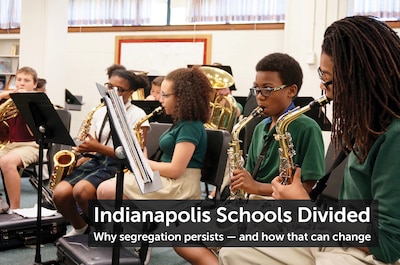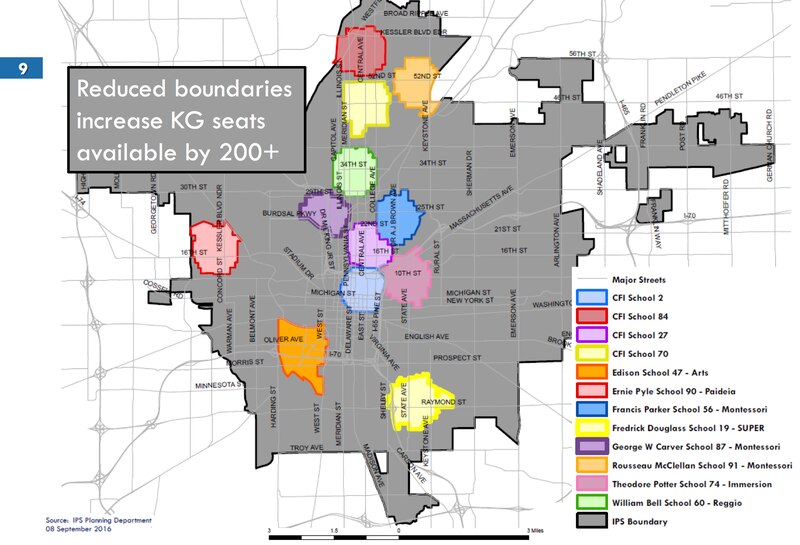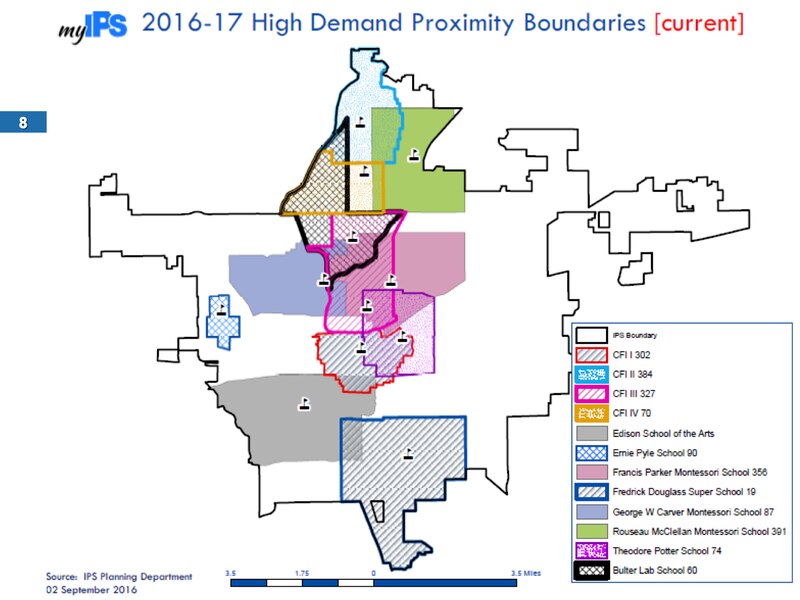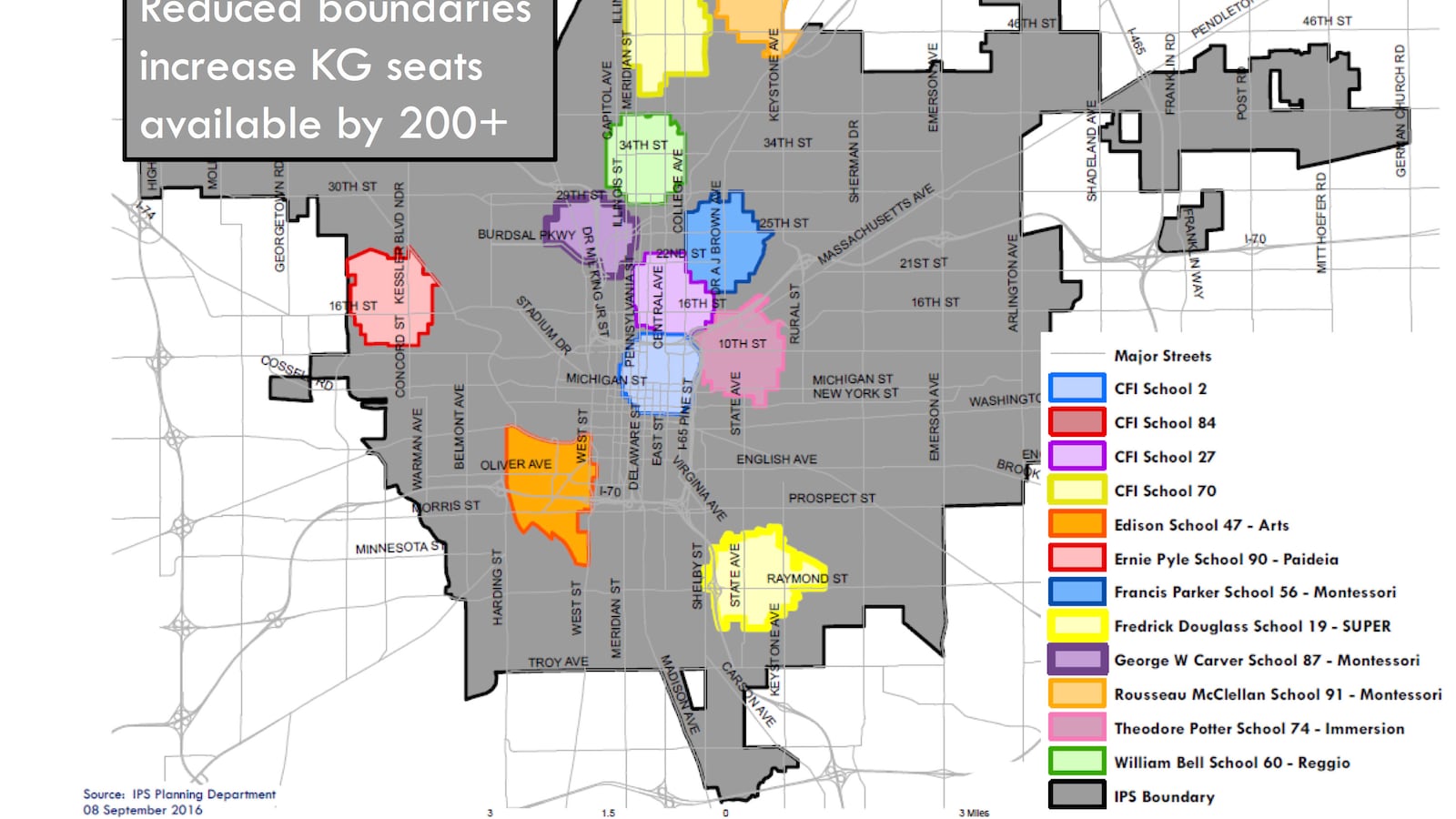Starting next school year, low-income children and students of color could have a better chance of winning spots at some of the most coveted schools in Indianapolis.
At least that’s the aim of a plan unveiled by Indianapolis Public Schools leaders this week that could change the way school admissions are decided at the city’s top schools, including Montessori and Centers for Inquiry schools, which typically receive more applications than they have seats and use lotteries to decide who to admit.
Critics have blasted the admissions lotteries as favoring higher-income, white families since they give priority to students who live near the schools and exclude families who aren’t aware of the need to apply before the January application deadline.
Now, however, the district board seems likely to support a proposal, scheduled for a vote next week, that would shrink the boundaries that give nearby families special access to magnet schools.
The proposal also would give families more time to apply.
The move follows a series of stories on segregation in the city’s schools from Chalkbeat, the Indianapolis Star and WFYI that highlighted the unfair magnet lottery rules. The series will culminate in a discussion 6 p.m. tomorrow at the Indianapolis Central Library.

IPS decided not to set aside seats specifically for low-income families, an idea that was considered. Superintendent Lewis Ferebee said the proposed changes to the lottery rules will likely be enough to level the playing field for families applying to magnet schools and increase diversity at some of the schools.
“We think that this is the fairest way to get at the goals we are trying to achieve,” Ferebee said. “If it doesn’t work, we will come back to the drawing board and it’s something that we will study.”
Last year, 110 children applied for the 44 kindergarten seats at School 84, one of the top performing magnet schools in IPS. But since children who live within about a mile of the school are admitted before the lottery is open to families from around the city, kids from outside the wealthy Meridian-Kessler neighborhood surrounding the school had little chance of admission.
In fact, with 67 applicants from within the proximity boundary, many local kids didn’t get seats either.
The proposal from IPS leaders would shrink the boundary around each magnet school to about half a mile.
(Scroll down to the bottom of the story for a detailed map of the proposed boundaries.)
If School 84 had used the smaller priority boundary last year, 30 children who applied would’ve received priority, leaving 14 kindergarten spots open to kids from around the district.
Districtwide, the new policy would open more than 200 kindergarten seats to students from outside proximity boundaries, according to the district.
“We’ve got to remember, we are talking about schools that we have told the public everyone has an option to get into, and we haven’t been really living up to that,” said School Board President Mary Ann Sullivan.
In addition to changing the boundaries, IPS is extending the enrollment period so that families who may not know about early application deadlines will still have a shot.
Last year, 3,980 children applied to the district’s magnet schools. But nearly half of those applications came in after the early January deadline.
The families who applied on time were much more likely to be high-income, according to district data. More than half of applicants who applied on time came from the highest-income neighborhoods in the city. Those high-income families made up less than a quarter of the applicants who applied late.
The district hopes to help more families qualify by creating two new admissions rounds. A mid-January admissions lottery (that mirrors the current timeline) would award 70 percent of seats. But 30 percent of seats would be held for lotteries in early March and late April, which are designed to give families who decide on schools later in the year a chance at admission. Most IPS schools don’t start enrolling kindergarteners until late May.
One reason district officials believe these changes would be enough to diversify magnet schools is because while students in magnet programs are more likely to be white than students in neighborhoods schools in IPS, the kids who apply for admission to the magnet schools are more diverse.
Joe Gramelspacher, an IPS staffer who drafted the plan, said that families of color want access to district magnet programs but the lottery rules are preventing them from winning admission.
“Our families want them, our school leaders are communicating them to diverse communities,” he said. “But our current policies … are getting in the way.”



